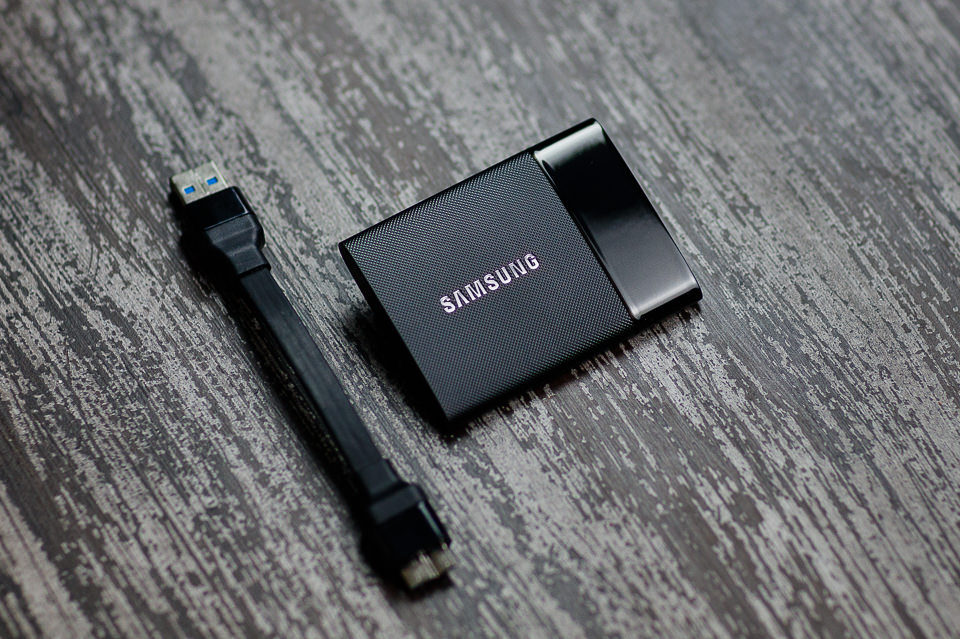

So what makes these two products external SSDs and not just oversized pen drives? SSDs use a different grade of NAND flash and much more competent controllers. Both take advantage of the high-density flash and high-speed USB 3.0 connectivity that now allow for SSDs to be packaged as bite-sized, pocket-friendly, super-convenient external devices. Today, we're examining the SanDisk Extreme 500 Portable SSD and the Samsung Portable SSD T1, both of which, as their names suggest, are designed to be carried around but still offer all the speed, capacity and reliability of standard internal drives. No longer forced to be the same size and shape as old-school spinning hard drives, SSDs have really broken out. Today, SSDs as large as 1TB or 2TB can fit into packages barely larger than today's biggest USB pen drives. In particular, 3D stacking, which Samsung advertises prominently as V-NAND, allows for unprecedented storage density in each physical chip. NAND flash has matured to the point where size, connectivity and cost are not limiting factors anymore.
#Samsung portable ssd t1 500gb usb 3.0 drive pro#
SSDs used to be thought of only as hard drive replacements, but as we've seen in our review of the Samsung SSD 950 PRO and examination of the M.2 form factor, the underlying technology is flexible enough to do much more. With improvements in density and manufacturing capabilities, more data can be stored on each individual chip, bringing the cost per GB down and allowing solid-state drives to get physically smaller without compromising on capacity.

Solid-state storage, once restricted to the most expensive desktops and laptops, has now become affordable enough to be considered mainstream.


 0 kommentar(er)
0 kommentar(er)
